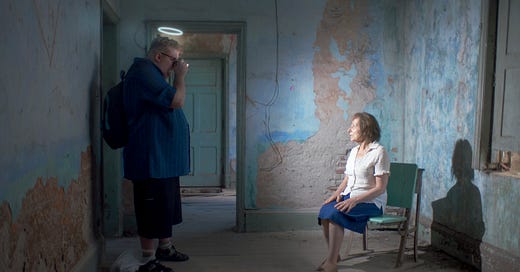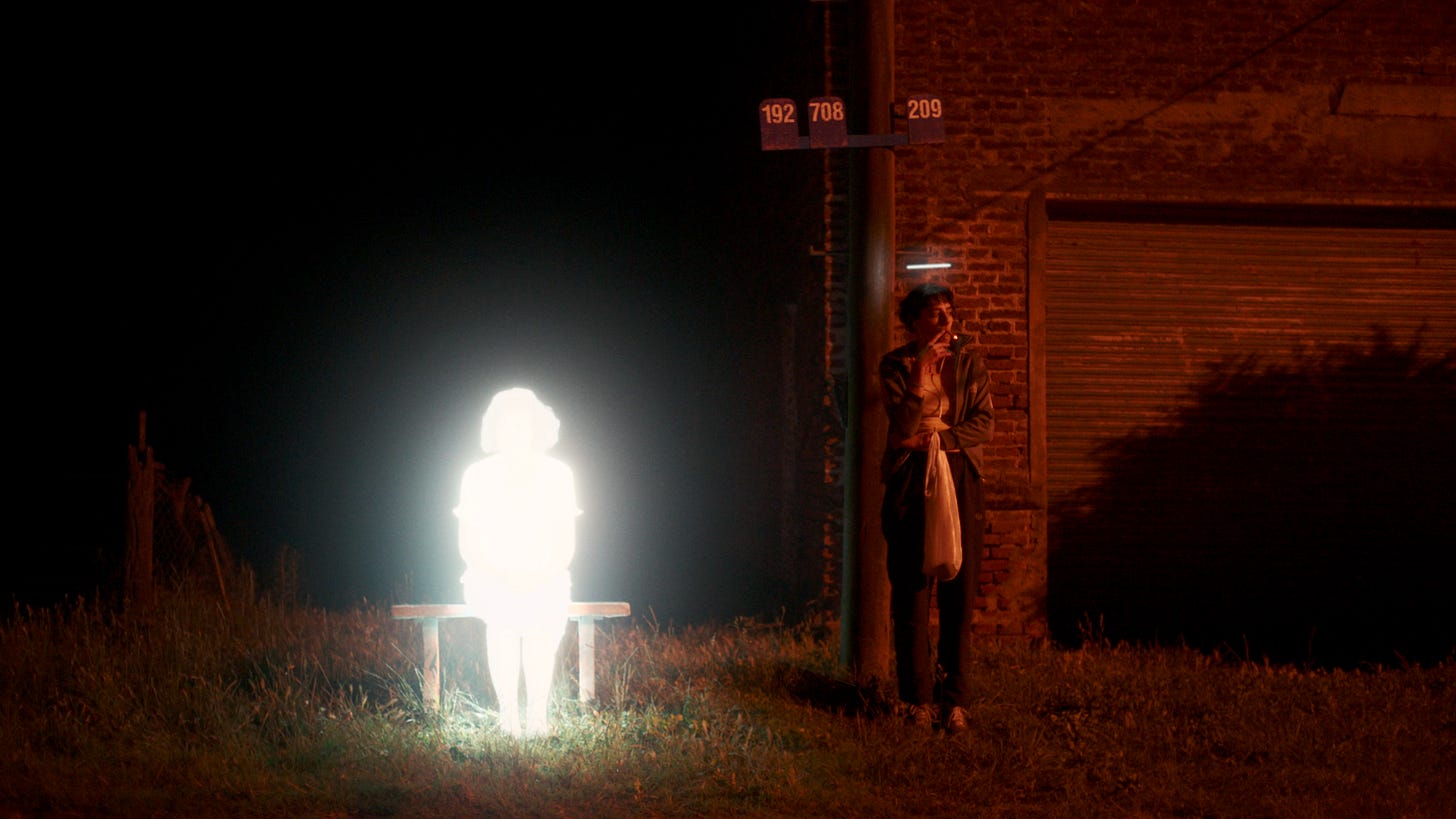I haven’t done the calculations, but I suspect there aren’t many ways that films can illustrate a ghost’s disassociation from the corporeal world. You can show their bodies passing through objects and walls; them trying desperately to speak to their still-living loved ones; if you’re in a rural setting, maybe you show them freaking out the livestock. The catalogue is pretty complete, so at the very least the Argentinian comedy Chronicles of a Wandering Saint gets props for finding a few new wrinkles. Happily, we don’t have to stop there.
In the latter half of the film, the recently deceased Rita (Mónica Villa) walks the streets of her town. A pious woman who in her not-dead-yet incarnation was tasked with cleaning the community’s small church – and who harbored a mild jealousy for how the priest lavished praise on the church’s modest singing group – she was, before her passing, in the process of orchestrating attention for herself by rigging up a miracle involving a plaster statue of some anonymous saint. Irony of ironies, she dies during the attempt – the details of which I will withhold since it involves one of debuting writer/director Tomás Gómez Bustillo’s more wicked gags – and discovers the bar to entering the Pantheon of Saints (official brand name) is considerably lower than imagined: Turns out if you’re a fairly decent person, you’re in. Given the choice by a very workaday angel (Nahiel Correa Dornell) between fast-tracking her ascendancy to heaven or the more desirable deluxe package – which includes such perks as canonization, the power to perform miracles, and time-travel – Rita chooses the latter, which means spending two more days among the living. Paperwork, I guess
In observing Rita’s time on Earth pre- and post-passing, Bustillo brings a shrewd mix of sharp, occasionally rule-breaking humor and genuine empathy to the film. A lot hangs on Villa’s performance – embodying both an exterior mousiness with a quiet determination – as well as that of Horacio Marassi, who plays Rita’s devoted husband, Norberto. The supernatural realm Bustillo creates is sharply whimsical: Demons ferry halo-bedecked, street-clothes-wearing angels around on mopeds; a soul left behind and trapped within a lightbulb conducts an animated conversation with another soul contained within a moth. Seems that our world is teeming with life in places we’ve never imagined – our commonplace is actually imbued with magic.
And in the film’s most riveting sequence, Bustillo takes us into what it must feel like to sense the world you knew slowly slipping away. As Rita wanders the night, a thunderstorm breaks out. In staccato flashes of illumination, we can only catch brief details of the things the spirit beholds: A damaged organ in the church storeroom; a friend asleep in bed; Norberto staring out a window. Tangible reality becomes tenuous, fleeting, a distant memory of which only few scant pieces can be retrieved. It’s a moment both beautiful and devastating.
There’s an impertinence to the way Bustillo tells his tale of a soul growing into its own, true sainthood. He pokes at the audience as much as he does his protagonists, and that makes Chronicles of a Wandering Saint both delightfully astringent and genuinely heartfelt. It’s fantasy grounded in a well-observed humanity, and wonderful from start to finish.





